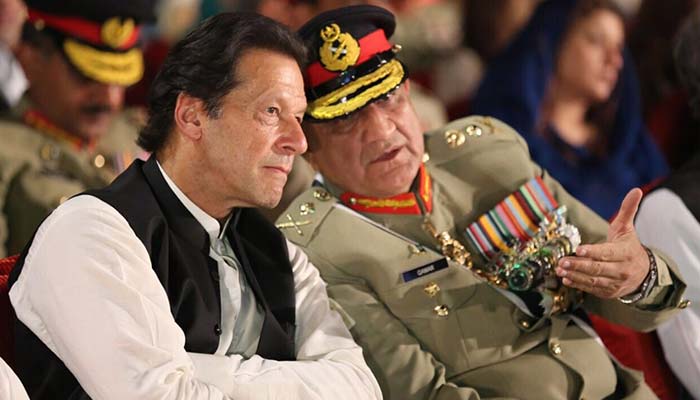There is massive mobilization of Indian Armed Forces in Jammu & Kashmir. After an additional 10,000 troops were deployed in the state of Jammu and Kashmir, another 28,000 have been deployed within days. The reason for the mobilization is still not clear but the Indian government has said that prospective terror attacks on Amarnath Yatra pilgrimage is the reason behind the activity in the valley. These heightened activities in Kashmir have put Pakistan in a frenzy, and reports suggest that huge deployment of troops has taken place on the Pakistan side also which shall be costing the country a fortune. The uncertainty sparked by the Indian government as it moves forward with anti-terror operations shall once again take a toll on the already struggling economy Pakistan. India’s mobilization is working both as psychological warfare and economic one (for example the air space closure) against Pakistan at a time when Pakistan is not in a position to afford any of this.
It has been found that Pakistani Army has planned terror attacks on pilgrims through launch pads in Pakistan Occupied Kashmir (PoK). “A landmine with marks of a Pakistan ordnance factory and a US-made sniper rifle were among the cache of arms recovered from a yatra route,” said an official release. “Latest intelligence inputs received suggest specific threat to the yatra,” said an advisory issued by Shaleen Kabra, principal secretary in the Jammu and Kashmir Home department.
Directorate General of Civil Aviation (DGCA): All airlines to be ready for additional flights to and from Srinagar at short notice to fly out tourists and Amarnath yatris.
— ANI (@ANI) August 2, 2019
The Director General of Civil Aviation (DGCA) has also asked for extra flights to and from Srinagar to fly out tourists and Amarnath Yatris. The Indian government officially gave tourists and pilgrims’ safety as the reason but experts say that the 25,000 troop deployment days after an additional 10,000 troops deployment in the valley is for some bigger purpose. Speculations ranging from the removal of Article 35A to the trifurcation of the state of Jammu and Kashmir or an offensive against Pakistan forces across the border, are fuelling up tensions in the rogue state of Pakistan which has long sponsored and abetted terror and separatist activities in Kashmir.
Therefore, in response to India’s additional troop deployment and preparedness for crisis situation, Pakistan has also mobilized its troops across the Line of Control and asked civilians for general preparedness for any possible crisis. At a time when Paksitan is battling an economic crisis, India’s mobilization has kept Imran Khan on his toes since February, that is, after the Balakot airstrikes. India’s hardened stance against cross-border terrorism has also put Pakistan on the back-foot both diplomatically and economically. Post airstrikes by India, Pakistan’s airspace closure cost the country over 8.5 billion rupees in five months.
The troop deployment by India has diverted Pakistan government’s attention from basic necessities of the country like food inflation. According to reports, Pakistan on Tuesday had a very important federal Cabinet meeting chaired by Prime Minister Imran Khan to discuss the prices of naan and roti in the country. The meeting had been fruitful as the federal cabinet has decided to revert back the prices of the naan and roti in the country to their original prices.
The debt ridden economy of Pakistan is in complete mess and it cannot afford small scale military conflict or a full scale war. The public finance of Pakistan is in doldrums. The Imran Khan led PTI government is on a reckless borrowing spree. As per a report by The Express Tribune, a Pakistani English daily, the debt ridden country further borrowed 16 billion dollars in last fiscal year. This is the highest ever borrowing by the government of Pakistan is a single fiscal year (July to June).
The inflation rate in Pakistan has crossed 9 per cent and expected to rise further. As evident in previous wartime macroeconomic pictures, high inflation will shoot by at least double digits if the country goes into war. A high inflation rate will destroy the macroeconomic stability of Pakistan which is already in poor condition. The common people of the country will not be able to afford basic amenities like food and other domestic necessities if a war with India grips the nation.
The total external debt and liabilities of Pakistan in the third quarter of previous fiscal year was around 105.8 billion dollars. This is around 40 percent of country’s GDP for the FY 19 which is estimated to be 274 billion dollars. It is hard to service this debt as the value of Pakistan rupee has showed exponential decline against the dollar in the last one year. As of July 24, the value of a Pakistan rupee was 160 rupees and by the end of this year it is expected to decline 200 rupees against dollar in current conditions. In a warlike situation, the condition would worsen.
While the cost of India’s mobilization is negligible in terms of India’s size, military and budget, for Pakistan even a limited mobilization means dealing a blow to its economy which is at a critical juncture. The debt ridden Islamic country, whose US military aid has also been terminated, is not in a position to afford even a small scale military conflict or war with India. At such a time, the Indian government has picked a ripe situation to up the ante on counter terrorism operations in Kashmir, and to deal heavy blows on Pakistan forces as they resort to cross-border shelling on Indian forces.
